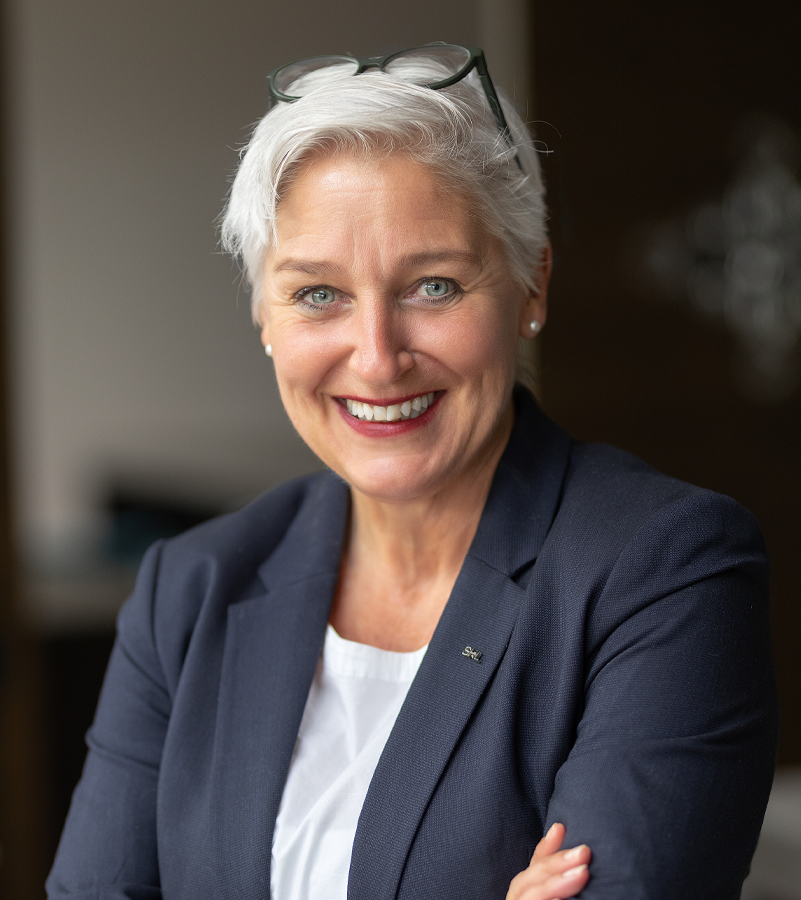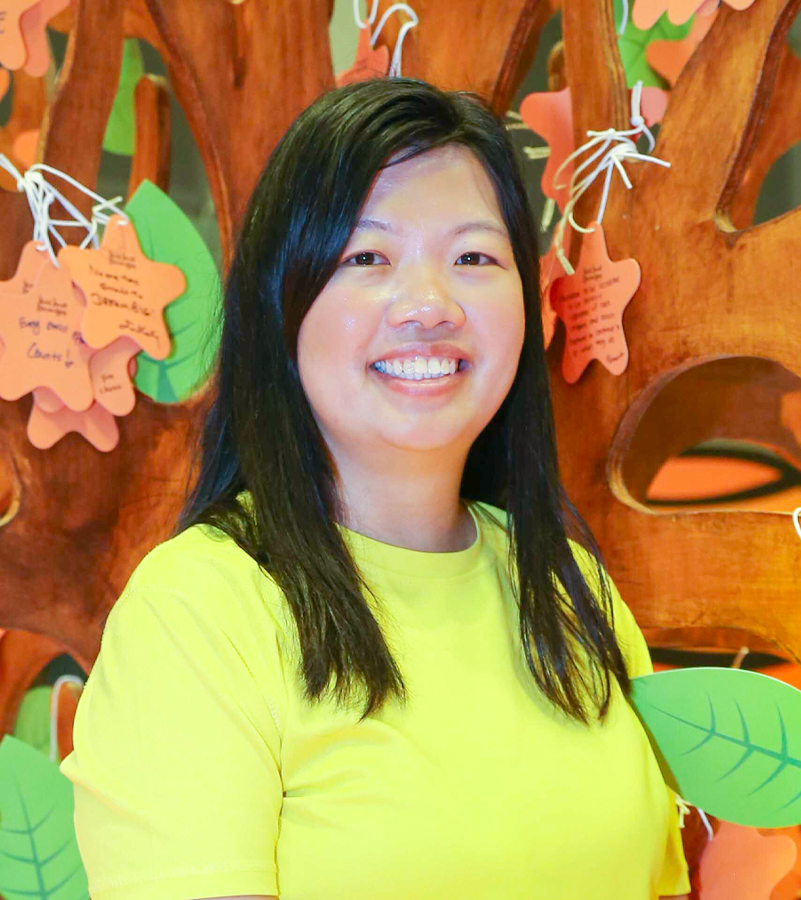"We would like to form hospitality personalities who fit in the tourism industry.”
We believe RISE comes from Raising Individual Student Excellence. Could you please start by giving us a brief introduction to the school at the moment?
RISE Academy School of Science & Technology was founded in 2007 by myself. RISE stands for Raising Individual Student Excellence. It started off back in 2003 when I started science and technology summer camps for students. I’m a former science teacher and administrator, and I have a PhD in curriculum and instruction.
I love the sciences, and as an educator, I know the critical nature of getting our students prepared for the 21st-century field of science and technology. I knew I wanted to start very early, hence the kindergarten through 8th-grade school that we started.
Kindergartners are naturally curious. So we started our school with the primary grades, grooming them to be critical thinkers and problem solvers—not a part of the problem, but part of the solution. So they may not all grow up to be scientists, physicists, astronomers or phlebotomists. What we do know is that whatever career path they choose, we want them to be very prepared in terms of their ability to think critically and solve world problems.
So, that’s how RISE Academy was founded and developed. Our mission is to raise scientists for the 21st century, and we have been pretty successful so far. Parents and the community are very pleased with our program. We’re now located in Margate, and the city loves us.
What would you say are the keys to the success of RISE Academy School of Science & Technology?
Our keys to success are the dedicated leadership and the faculty and staff. Our principal is very powerful. Our principal is completely in line with the school mission, is very driven by student success, understands that success starts in the classroom and empowers the teachers to be in line with the mission and do whatever it takes to get our students to the next level. I realize that it hasn’t been an easy job operating a school, but what makes it easier is having leadership, faculty and staff all on the same page working toward student success.
We’ve been recognized by US News & World Report as one of the top middle schools in the country. We just earned the status of “School of Excellence” in the State of Florida, which is the highest honor given to a school. So the kinds of things that we are doing to build the success is just building the team from the leadership down, focusing on student data and driving down on what the students need to know and be able to do daily to reach the goals that are earmarked on a quarterly basis, on a semiannual basis and on an annual basis.
We run a fairly tight chip. We are a uniform school. We know from experience that I’m the former senior vice president of an educational management company, where I was a part of opening more than 35 schools throughout the country. I know what it takes to build a successful program and the focus has to be on the student and student performance. We run a tight ship because we know that having uniforms in school allows us to focus on the academic part and not get sidetracked by other areas. The students can get sidetracked and take their eyes off the ball.
So, we are a strict uniform school. We have rules and regulations within the school building that allow the students to have a very structured environment but a very open environment where they have access to the adults in the building. We have a social-emotional learning program.
We have tons of activities for our students. We function to make sure that we’re tapping into all the social-emotional areas as well as the academic areas to tap into the whole child. So we know that it is important to work with the students academically in the classroom. But we also know that we need to spread and allow students to expand their knowledge outside of the classroom.
So we are a member of the United Nations. We have a very high functioning chapter where our students get a very global perspective from experts in various fields. Our students get a chance to zoom in or tune in and ask questions. They get a chance to get critical feedback from these experts who will help them form their opinions, inform them or help give them information to form their opinions and abilities better to impact the world. We do that for our middle school students.
We’re an accredited STEM school. We’re one of 47 STEM-accredited schools in the State of Florida. So we make sure that our students get exposure, traveling around the country and competing locally and nationally. Our students represented the State of Florida in a science competition. We flew them to Illinois. We compete locally, and our STEM program allows us to form community partnerships. That helps solidify our program and helps us build the relationships that we need. Although we’re not a high school yet, we are interested in building our program from middle school into high school. Parents want us to do that. But anyway, those are some of the tenets that we go by.
Our students learn a pledge in kindergarten that starts with, “I am here to learn. No one can make me, but it is my right. I’m responsible for my own education. I am in control.” It’s a lengthy pledge, but they start learning it in kindergarten. They say it daily. It’s a part of their parent-student handbook. It’s a part of their planner. It’s all over the building. So we like them to recite it and just learn to take responsibility for their own education. So the success that we have with the population has everything to do with our staff’s ability to reach them, be available to them and be very well planned and prepared to address their needs.
Would you perhaps tell us a little bit more in detail about what makes your programs special?
What makes our program special is that we have our STEM program. We are credited by Cognia AdvancedED. What makes our program special is that we start working with our students in kindergarten. We start dissecting in kindergarten. We introduce our students to small specimens. Each student has a STEM lab built within their schedule. We dissect all the way up to bull sharks once they get into 8th grade. So, by the time they get to college, they have done things in the area of science and technology that most students don’t get until they’re in high school.
If we’re talking about science and technology or life science concepts, we introduce the students to the entire cycle of life science. They may hatch butterflies from larvae or fertilized eggs. Then, if we’re talking about astronomy and we have a unit on astronomy, we will make it very hands-on. We partner with a couple of colleges. We partner with Florida Atlantic University (FAU), and they bring their astronomer in as well as their traveling planetarium. We erect it in our gym area, and it’s two stories.
The culminating event would be the activity in the actual planetarium where they are learning, pulling all of the information that they’ve learned about Earth and space science into that culminating event. We have an overnight astronomy field trip where the students and the parents spend the night at the school, and we take our telescopes outside, make some observations and just expose the students to real-life astronomy. And that’s a fun night.
We do many other activities in every area of science and technology. Of course, reading, mathematics, and reading are very important. That’s our number one focus. However, we also incorporate other content areas and bring science to life.
I think that’s the key to everything. Once you know how to read and comprehend information, then you can go to college and so on. You can absorb a lot of content.
Yes, absolutely.
What is the main message that you would like to send across with this feature?
Our program is expanding and we are out of space. So, if you bring a very high-powered, engaging program to learners, regardless of their level or their abilities when they come to you, the key to advancing them is to focus on the whole child. We have a Saturday school where we invite students to come. We have the whole third of our population attending on Saturdays when their parents bring them to school. We offer free tutoring in the afternoons. So we engage the parents, families and students to be a real part of our mission. In doing so, we know that we are truly building scientists for the 21st century.
We are a full Title 1 school. These students have such an appetite for learning that they need educators who are driven and persevere, knowing that the end result or the end game is student achievement. So when our students come back to us, it makes us feel very good that we’ve really touched their lives.
There’s a whole lot that I would like to say, but what I do know is that we are a school bursting at the seams. We are a charter school, so we receive state and federal funding to operate. We are great stewards of the dollars of the people. We are great stewards of their funding. We put it all into the students.
However, we still have to be focused on what we want our end results to be, and that is high student performance. The reason I started talking a little bit about how we’re bursting at the seams is that we need financial partnership so that we can grow our school and take advantage of the population that’s coming to us, take advantage of any partnership that would allow us more space.
As a charter school, we operate as if it were a contract. We have the autonomy to partner with organizations that focus on science and technology. Our partnerships can help us expand our facilities to serve more students and expand our ability to provide on-site professional development for teachers.
Organizations that focus on students who are closer to entering the workforce get more priority than we do as a school of K-8. So, if we were a high school 9-12, I think the partnerships would be more readily available. But partnering with us and working with these young minds, helping to develop them to make the best higher education selections and career choices, would be a valuable partnership for an organization like Microsoft or any of the companies that focus on STEM or anything in that area. They’re not looking at elementary schools or K-8 schools to really partner with to that degree, but our students are sharp and ready for the world. I don’t know if that makes sense, but those are the things that would help strengthen RISE Academy and help it fulfill its mission.
Is there anything I haven’t asked you about that you would like to mention as well?
The other thing I wanted to say is that we use real equipment. We expose students to the use of real microscopes. Starting in kindergarten, we expose them to the use of real telescopes. We don’t have toys. So, in our lab, we use real test tubes and glassware, and they are expensive. It’s costly, but we do it because we know that we’re setting them up for success. When they go on and take advanced classes in high school, they’re already set. They understand what happens with the dissection and why.



















